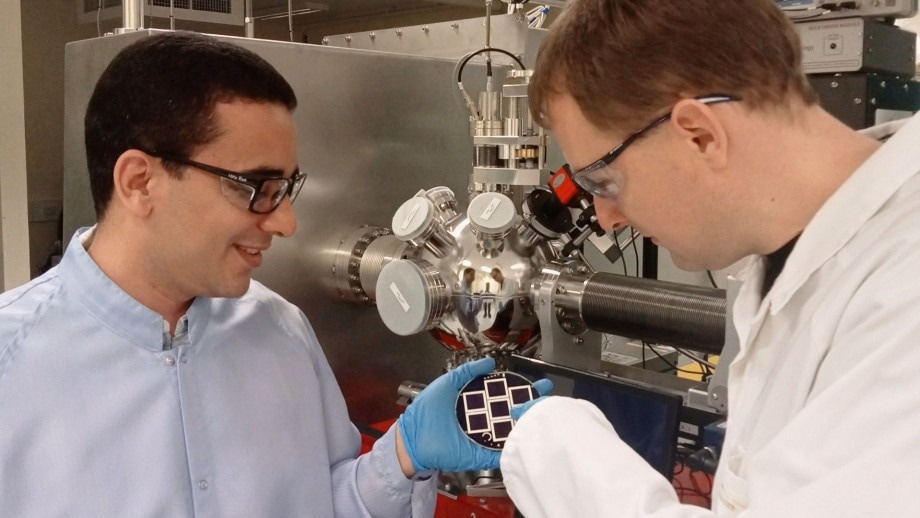Reviewed by Emily Henderson, B.Sc.Nov 7 2022
Researchers at The Australian National University (ANU) have come up with a method to enhance the performance of silicon photovoltaic (PV) or solar cells.
 PhD Candidate Mohamed Ismeal (left) and Dr. Lachlan Blck. Image Credit: Australian National University
PhD Candidate Mohamed Ismeal (left) and Dr. Lachlan Blck. Image Credit: Australian National University
This is performed via the addition of so-called “passivating contacts” between the metal and silicon parts of the solar cell, thereby making it highly productive.
These findings will help push the performance of silicon solar cells closer to their theoretical limit. Each day, the sun produces significantly more energy than needed to power the whole planet. The only limitation is our ability to economically convert it to electricity.
Mohamed Ismael, Study Lead Researcher, and PhD Candidate, Australian National University
Solar cells are devices that have the potential to convert light energy in the form of photons into electrical energy. As been named, solar cells are not functioning at their utmost capacity as a result of the considerable electrical losses linked to the direct contact of metals with silicon.
Transition metal oxides such as titanium oxide have many qualities that make them ideal as passivating contact layers. This isn't a new idea, but the way in which we combined these layers has produced better results and higher operating voltages than anything previously reported.
Dr Lachlan Black, Australian National University
The research group is wishing to develop the technology to a level where it can be employed in industrial solar cells on a large scale.
The PV market is known as a multi-billion-dollar industry, having silicon solar cells adding up to 95% of all commercial solar cells. They are anticipated to stay dominant for the predictable future given their beneficial properties over the competitors.
Dr Black stated, “If successful, we could see our technology in almost all new solar panels installed on your roof or utility-scale solar plants.”
A few practical problems still need to be fulfilled before the technology could be implemented. However, the PV community is already working to resolve these difficulties.
Improving the efficiency of solar cells guarantees more clean energy at a reduced cost. This not only helps to address climate change, but opens up new economic opportunities for this low-cost clean energy.
Mohamed Ismael, Study Lead Researcher and PhD Candidate, Australian National University
Journal Reference:
Shehata, M. M., et al. (2022) Outstanding Surface Passivation for Highly Efficient Silicon Solar Cells Enabled by Innovative AlyTiOx/TiOx Electron-Selective Contact Stack. Solar RRL. https://doi.org/10.1002/solr.202200550.